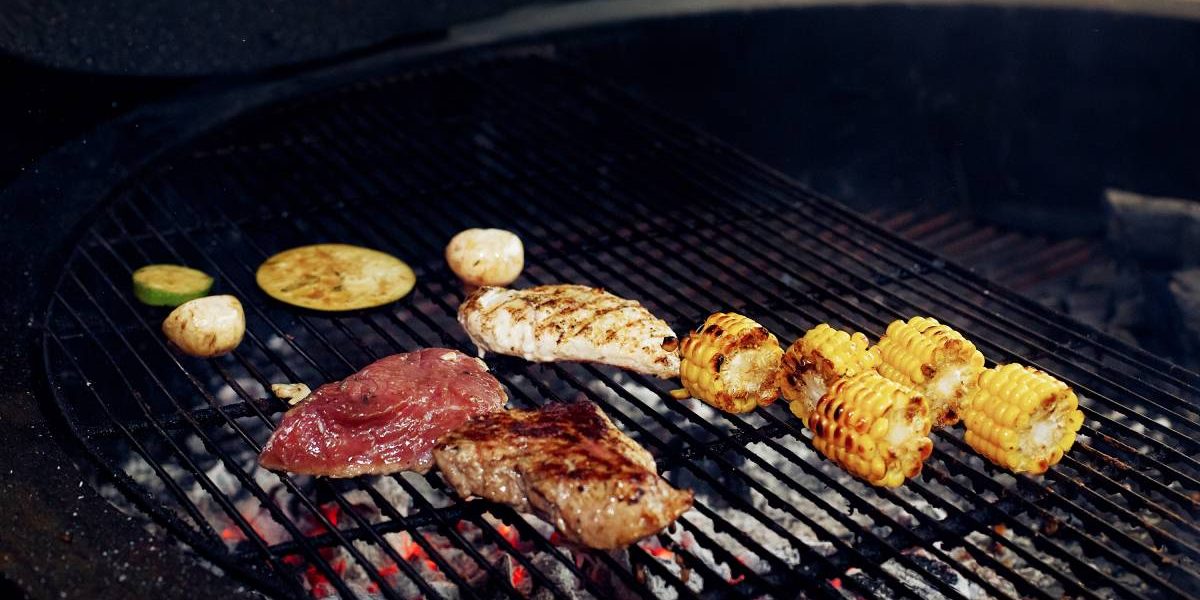Grilling is more than just a cooking method; it’s a way to bring people together and enjoy delicious meals outdoors.
Whether you’re a seasoned grill master or a beginner eager to try your hand at cooking over an open flame, choosing the right grill is essential for creating the perfect culinary experience.
But with so many options on the market, how do you know which grill is best for your needs? In this article, we’ll explore the key features to look for when purchasing a grill, how to ensure that your grill is safe to use, and whether it’s normal to smell gas while grilling.
By the end, you’ll be equipped with the knowledge to make an informed decision, ensuring your grilling experience is both safe and enjoyable.
1. What Features Should I Look for When Buying a Grill?
The perfect grill is a balance of performance, durability, and convenience. Here are the key features to consider when buying a grill:
a) Grill Type: Gas, Charcoal, or Electric
The first decision you’ll need to make when buying a grill is the type of grill. There are three main types: gas, charcoal, and electric. Each has its own set of advantages and drawbacks.
- Gas Grills: Gas grills are convenient and easy to use, offering instant heat with just the push of a button. They are ideal for people who want a fast, efficient grilling experience without the hassle of charcoal. Gas grills can be powered by either propane or natural gas. They offer consistent temperature control and allow for precise cooking.
- Charcoal Grills: Charcoal grills are a favorite for traditionalists who enjoy the smoky flavor they add to food. Although they require more preparation and time to heat up, many grill enthusiasts believe that charcoal grilling imparts a unique flavor that can’t be replicated with gas. Charcoal grills tend to be more affordable and versatile in terms of size and cooking style.
- Electric Grills: Electric grills are ideal for people who live in apartments or areas with strict fire regulations. They provide a simple and clean grilling experience, requiring only an electric outlet. However, they don’t offer the same flavor or versatility as gas or charcoal grills.
b) Size and Cooking Area
The size of the grill is another crucial factor. You need to consider how many people you typically cook for and how much space you have in your backyard or patio.
Grill sizes vary, from small tabletop models for small gatherings to large, freestanding units capable of cooking for large groups.
A larger grill provides more cooking space, but it may also take up more room and require more fuel. If you have a small family or limited space, a compact grill might suit your needs, while larger grills are best for those who regularly host BBQ parties or have a big family.
c) Heat Output and Temperature Control
Grill performance is mainly determined by its heat output, measured in BTUs (British Thermal Units) per hour.
While a higher BTU rating means more heat, it doesn’t automatically mean a better grill. Even heat distribution is key.
Look for grills with adjustable burners for better temperature control, allowing you to cook at different temperatures simultaneously, giving you more flexibility for various types of food.
d) Durability and Construction
The material and construction of a grill affect its durability. High-quality grills are often made from stainless steel, which resists rust, corrosion, and heat damage, ensuring longer-lasting performance with less maintenance. Look for sturdy wheels for mobility, a stable base, and heat-resistant handles. A well-built grill provides both longevity and safety during use.
e) Grilling Features
Consider additional features that can enhance your grilling experience. Some popular features include:
- Side Burners: These allow you to cook side dishes, sauces, or heat up pans while grilling.
- Rotisserie Attachments: Great for roasting chicken or other large cuts of meat.
- Temperature Gauges: Built-in temperature gauges can help you monitor the internal temperature of the grill, ensuring even cooking.
- Shelves and Storage: Look for grills with side tables or shelves for prepping food and storing grilling tools.
- Easy Cleanup: Features such as grease trays, removable grates, and drip pans make cleaning up much easier after grilling.
f) Portability and Storage
If you’re short on space or need a portable grill for camping or tailgating, consider a model that’s lightweight and easy to transport.
Many portable grills offer foldable legs, built-in handles, and compact designs for easy storage. Consider your lifestyle and where you’ll be using the grill most often when making your choice.
2. How Do I Know If My Grill Is Safe to Use?
Ensuring that your grill is safe to use is critical to avoid accidents such as fires or gas leaks. Here are several steps to take to ensure your grill is safe:
a) Check for Gas Leaks
Gas leaks are one of the most common dangers associated with grills. Before using a gas grill, always check for leaks in the gas line and connections.
You can perform a simple leak test by mixing a small amount of dish soap with water and applying it to the gas hose and connections.
If you see bubbles forming, there’s a leak, and the grill should not be used until the issue is fixed.
b) Inspect the Burner Tubes
The burner tubes should be free from obstructions such as grease buildup or debris. These obstructions can block the flow of gas, causing an uneven flame or even a fire hazard. Regularly inspect the burner tubes for any signs of rust, cracks, or damage.
c) Ensure Proper Ventilation
Make sure that your grill is set up in a well-ventilated area to prevent the buildup of dangerous gases like carbon monoxide. Never use a gas grill in an enclosed space like a garage or indoors.
d) Regular Maintenance
Routine maintenance is essential for grill safety. Clean the grill after every use to prevent grease buildup, which can cause flare-ups.
Additionally, check the grill periodically for signs of wear and tear. Replace any damaged parts, such as the regulator, hoses, or burners, to keep the grill in safe working condition.
3. Is It Normal to Smell Gas from a Grill?
It’s not normal to smell gas from a grill. A faint gas smell may occur when the burners are turned on, but it should dissipate quickly.
If you continue to smell gas after lighting the grill or if the smell is strong, it could indicate a leak. Immediately turn off the gas supply, open the grill lid, and inspect for leaks. If you find a leak, do not attempt to use the grill and call a professional for assistance.
In rare cases, the smell of gas may indicate a malfunction in the grill’s regulator or burner system. If you’re unsure, always consult the manufacturer’s instructions or contact a technician for a thorough inspection.
Addressing the Food Waste Crisis:
When using your grill, consider making use of leftovers from previous meals instead of throwing them away.
This helps reduce food waste and is a sustainable way of using ingredients that would otherwise go unused.
Grilling can also be a great way to prepare larger meals that can be enjoyed over multiple days, contributing to a more sustainable lifestyle by reducing food waste in your household.
Conclusion
Choosing the right grill and ensuring that it is safe to use requires careful consideration of key features such as the grill type, size, durability, heat output, and additional features.
Regular maintenance and safety checks are vital for safe grilling. Remember, safety comes first whether it’s checking for gas leaks, inspecting burners, or ensuring proper ventilation.
By taking these steps, you’ll be able to enjoy grilling with confidence, knowing that you’ve chosen a safe and high-quality grill for your needs. Happy grilling!











